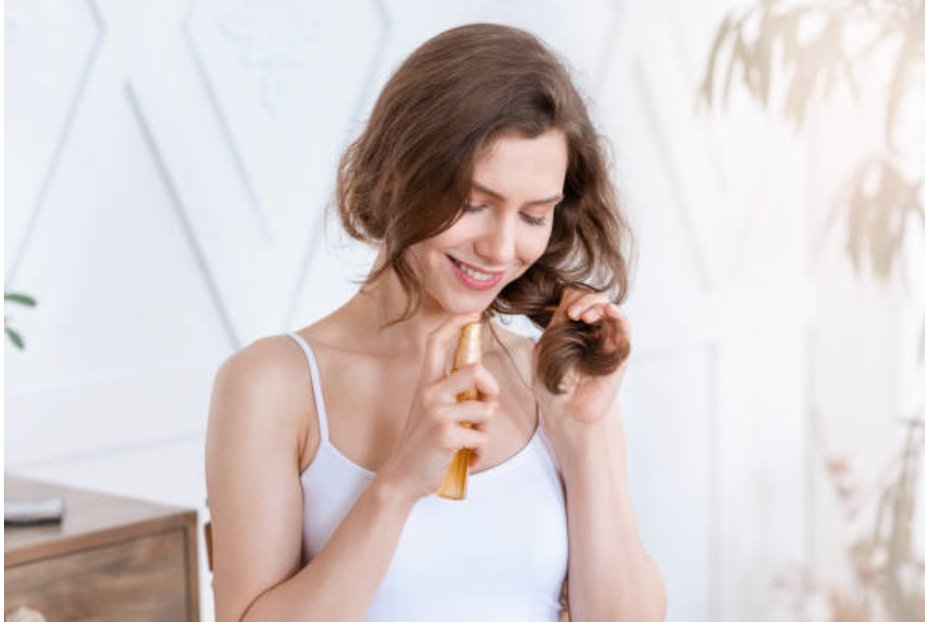Creating a natural scalp serum at home is an excellent way to address various scalp issues, such as dryness, dandruff, and itchiness, without the use of harsh chemicals. Homemade scalp serums can be customized to suit your specific needs, utilizing natural ingredients that nourish and soothe your scalp.
This article will guide you through the benefits of using a natural scalp serum, key ingredients, and stepbystep instructions for making your own at home.
Benefits of Natural Scalp Serum
1. Customized Care
Homemade scalp serums allow you to tailor the ingredients to meet your specific scalp concerns. Whether you need hydration, relief from dandruff, or stimulation for hair growth, you can choose ingredients that address your needs directly.
2. ChemicalFree
Natural scalp serums are free from harsh chemicals, sulfates, and parabens that are commonly found in commercial products. This reduces the risk of irritation and allergic reactions, making them ideal for sensitive scalps.
3. CostEffective
Making your own scalp serum can be more economical in the long run. Many of the ingredients can be found in your kitchen or local health store, saving you money on expensive hair care products.
4. NutrientRich
Natural ingredients are packed with vitamins, minerals, and antioxidants that nourish the scalp and promote healthy hair growth. Essential oils, carrier oils, and herbal extracts can provide deep nourishment and hydration.
Key Ingredients for a Natural Scalp Serum
1. Carrier Oils
Carrier oils form the base of your scalp serum and help to deliver essential nutrients to the scalp. Some popular carrier oils include:
- Jojoba Oil: Mimics the scalp’s natural oils and helps to balance oil production.
- Coconut Oil: Deeply moisturizing and has antifungal properties, making it great for dandruff.
- Argan Oil: Rich in vitamin E and fatty acids, it promotes healthy hair growth and reduces inflammation.
2. Essential Oils
Essential oils add therapeutic benefits and fragrance to your scalp serum. Some beneficial essential oils include:
- Tea Tree Oil: Antifungal and antibacterial properties help to combat dandruff and itchiness.
- Peppermint Oil: Stimulates blood circulation and provides a cooling sensation to soothe irritation.
- Lavender Oil: Calms the scalp and promotes hair growth with its antiinflammatory properties.
3. Herbal Extracts and Additives
Adding herbal extracts and other natural ingredients can enhance the effectiveness of your scalp serum:
- Aloe Vera Gel: Provides hydration and soothes inflammation.
- Rosemary Extract: Stimulates hair follicles and promotes hair growth.
- Vitamin E Oil: Acts as a powerful antioxidant, protecting the scalp and hair from damage.
StepbyStep Guide to Making Your Own Natural Scalp Serum
Ingredients:
- 2 tablespoons of jojoba oil
- 1 tablespoon of coconut oil
- 10 drops of tea tree oil
- 10 drops of peppermint oil
- 10 drops of lavender oil
- 1 tablespoon of aloe vera gel
- 1 teaspoon of rosemary extract
- 1 teaspoon of vitamin E oil
Instructions:
1. Prepare Your Ingredients
Gather all your ingredients and measure them accurately. Ensure that you use highquality, organic oils and extracts for the best results.
2. Combine the Carrier Oils
In a small, clean bowl, combine the jojoba oil and coconut oil. Mix them well to create a smooth base for your scalp serum.
3. Add Essential Oils
Add the tea tree oil, peppermint oil, and lavender oil to the carrier oil mixture. Stir thoroughly to ensure the essential oils are evenly distributed.
4. Incorporate Herbal Extracts and Additives
Add the aloe vera gel, rosemary extract, and vitamin E oil to the mixture. Mix well until all the ingredients are fully blended.
5. Transfer to a Container
Pour the serum into a dark glass dropper bottle to protect the essential oils from light, which can degrade their potency. Label the bottle with the date and contents.
6. Shake Well Before Use
Shake the bottle well before each use to ensure the ingredients are well mixed.
How to Use Your Natural Scalp Serum
1. Apply to Clean Scalp
For best results, apply the scalp serum to a clean scalp. You can use it on dry or damp hair after washing.
2. Section Your Hair
Divide your hair into sections to ensure the serum is applied directly to the scalp. This helps in even distribution.
3. Massage Gently
Using the dropper, apply a few drops of the serum to each section of your scalp. Massage gently with your fingertips in circular motions to stimulate blood circulation and enhance absorption.
4. Leave It In
Leave the serum on your scalp for at least 30 minutes. For deeper treatment, you can leave it on overnight and wash it out the next morning.
5. Use Regularly
Consistency is key. Use the scalp serum 23 times a week for best results. Over time, you should notice an improvement in scalp health and hair growth.
Conclusion
Making your own natural scalp serum at home is a simple and effective way to address scalp issues and promote healthy hair growth. By using highquality, natural ingredients, you can create a customized treatment that nourishes and soothes your scalp without the risk of harsh chemicals. With regular use, a homemade scalp serum can help you achieve a healthier, more balanced scalp and beautiful hair. Enjoy the process of creating your personalized scalp care solution and experience the benefits of natural, effective hair care.
